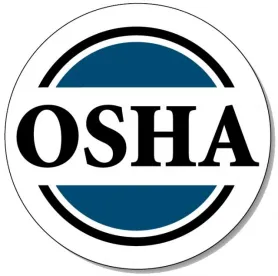On April 25, 2017, the Occupational Safety and Health Administration (OSHA) rescinded a Feb. 21, 2013 letter from former Deputy Assistant Secretary Richard E. Fairfax to Mr. Steve Sallman (Fairfax Memo) that permitted workers at a worksite without a collective bargaining agreement to designate a person affiliated with a union or community organization to act on their behalf as a representative during an OSHA walkaround inspection.
Employers have viewed the Fairfax Memo as a way for unions to get access to employees that they hope to unionize. With the rescission of this memo, employers are no longer required to permit union officials to represent workers at a worksite without a collective bargaining agreement during an OSHA walkaround inspection.
Background
The Occupational Safety and Health Act (OSH Act) authorizes participation in a walkaround portion of an OSHA inspection by a “representative authorized by the [the employer’s] employees.”1 In addition, the OSH Act’s regulations state:
The representative(s) authorized by employees shall be an employee(s) of the employer. However, if in the judgment of the [CSHO], good cause has been shown why accompaniment by a third party who is not an employee of the employer (such as an industrial hygienist or a safety engineer) is reasonably necessary to the conduct of an effective and thorough physical inspection of the workplace such third party may accompany the [CSHO] during the inspection.2
On Feb. 21, 2013, in response to a union official’s inquiry, then Deputy Assistant Secretary Richard E. Fairfax concluded in a letter of interpretation (the Fairfax Memo) that the OSH Act permits an employee without a collective bargaining agreement to designate a person affiliated with a union to act on his or her behalf as a walkaround representative.3 Consistent with section 1903.8(c), OSHA concluded that “representatives are ‘reasonably necessary’ when they will make a positive contribution to a thorough and effective inspection.”4 The Fairfax Memo further stated that “there are numerous ways that an employee representative who is neither an employee of the employer being inspected nor a collective bargaining agent could make an important contribution to a thorough and effective inspection. This could be because of the representative’s experience and skill, for example because of experience evaluating similar working conditions in a different plant.”5
On Sept. 8, 2016, the National Federation of Independent Business (NFIB) sued OSHA, alleging that the Fairfax Memo was, among other things, illegal because it exceeded OSHA’s rule making authority. After the defendants filed a motion to dismiss, the Northern District of Texas found that the Fairfax Memo did not exceed OSHA’s authority under the OSH Act because the Fairfax Memo merely broadly interpreted a provision of the OSH Act. The court also found, however, that the NFIB had sufficiently alleged an injury. The Fairfax Memo, the court reasoned, left “NFIB members to imminent threat that a compliance officer will arrive at one of their workspaces with an ex parte warrant to conduct a walkaround inspection, accompanied by a non-employee representative.”
On April 25, 2017, OSHA issued a memorandum notifying all of its Regional Administrators that OSHA had rescinded the Fairfax Memo. In the memorandum, OSHA stated that due to the OSH Act’s regulations, specifically 29 C.F.R. 1903.8(c), the Fairfax Memo was no longer necessary. Specifically, OSHA explained that the regulation permits, where good cause is shown and where “reasonably necessary to the conduct of an effective and thorough physical inspection of the workplace,” a CSHO may allow a non-employee third party to accompany the CSHO during an OSHA inspection.
Two days later, the NFIB moved to dismiss the case regarding the Fairfax Memo.
Takeaways
OSHA’s rescission of the Fairfax Memo follows the recent trend of the new administration’s Department of Labor rolling back what some may view as pro-employee policies that OSHA implemented under President Obama’s administration. OSHA’s rescission of the Fairfax Memo ends the requirement that employers must allow employees without a collective bargaining agreement to designate a person affiliated with a union or community organization to act on their behalf as a walkaround representative during an OSHA inspection. Now, employees may only designate an employee(s) of an employer (or an industrial hygienist or safety engineer where “reasonably necessary” to conduct an OSHA inspection) as their authorized representative during an OSHA walkaround inspection.
Employers should inform managers, supervisors, human resources, and safety personnel that OSHA rescinded the Fairfax Memo and that OSHA no longer permits non-union employees to designate a person affiliated with a union as their authorized representatives during an OSHA walkaround inspection.
1 29 U.S.C. § 657(e).
2 29 C.F.R. § 1903.8(c).
3 Letter of Interpretation, Feb. 21, 2013.
4 Id. at 2.
5 Id.



 />i
/>i

